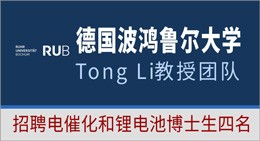Our official English website, www.x-mol.net, welcomes your
feedback! (Note: you will need to create a separate account there.)
Detrital isotopic record of a retreating accretionary orogen: An example from the Patagonian Andes
Geology ( IF 4.8 ) Pub Date : 2024-06-01 , DOI: 10.1130/g51918.1
F.M. Rey 1 , M.A. Malkowski 1 , J.C. Fosdick 2 , S.C. Dobbs 3 , M. Calderón 4 , M.C. Ghiglione 5 , S.A. Graham 3
Geology ( IF 4.8 ) Pub Date : 2024-06-01 , DOI: 10.1130/g51918.1
F.M. Rey 1 , M.A. Malkowski 1 , J.C. Fosdick 2 , S.C. Dobbs 3 , M. Calderón 4 , M.C. Ghiglione 5 , S.A. Graham 3
Affiliation
U-Pb zircon geochronology and isotopic records have played an influential role in our understanding of convergent margin dynamics. Orogenic cyclicity models link tectonic regimes with magmatic isotopic signatures in advancing orogens, relating compressional regimes with evolved signatures and extension with juvenile signatures; however, such frameworks may not apply for retreating orogens, which commonly produce substantial crustal heterogeneities during backarc rifting and ocean spreading. We explore the Mesozoic to Cenozoic Patagonian Andes tectonic evolution, combining U-Pb zircon ages, bulk rock εNd, and new detrital zircon εHf from the retroarc basin to understand the associated magmatic arc evolution during retreat and advance of the margin. Our results reveal a protracted phase of isotopically juvenile magmatism between 150 and 80 Ma, which began during backarc extension and persisted long after the margin switched to a contractional regime. We propose that the prolonged juvenile isotopic trend started mainly due to trenchward migration of the arc during backarc extension (150–120 Ma) and persisted due to partial melting of underthrusted juvenile attenuated and oceanic crust during backarc basin closure (120–80 Ma). This interpretation implies that tectonic stress alone does not predict isotopic trends, and factors like assimilation or the composition of underthrusted crust are important controls on magmatic isotopic composition, especially in retreating and transitional orogens.
中文翻译:

后退增生造山带的碎屑同位素记录:巴塔哥尼亚安第斯山脉的一个例子
U-Pb 锆石地质年代学和同位素记录在我们理解汇聚边缘动力学方面发挥了重要作用。造山周期模型将构造体系与前进造山带中的岩浆同位素特征联系起来,将挤压体系与演化特征联系起来,将伸展特征与新生特征联系起来;然而,这样的框架可能不适用于后退的造山带,因为造山带在弧后裂谷和海洋扩张过程中通常会产生大量的地壳异质性。我们结合弧后盆地的 U-Pb 锆石年龄、块岩 εNd 和新碎屑锆石 εHf 来探索中生代至新生代巴塔哥尼亚安第斯山脉的构造演化,以了解边缘退缩和前进过程中相关的岩浆弧演化。我们的结果揭示了 150 至 80 Ma 之间同位素幼年岩浆作用的延长阶段,该阶段开始于弧后伸展期间,并在边缘转变为收缩状态后持续很长一段时间。我们认为,长期的新生同位素趋势主要是由于弧后伸展期间(150-120Ma)弧向沟槽迁移而开始,并由于弧后盆地闭合期间(120-80Ma)逆冲的新生衰减和洋壳部分熔融而持续存在。这种解释意味着构造应力本身并不能预测同位素趋势,同化或逆冲地壳的成分等因素是对岩浆同位素成分的重要控制,特别是在后退和过渡造山带中。
更新日期:2024-05-30
中文翻译:

后退增生造山带的碎屑同位素记录:巴塔哥尼亚安第斯山脉的一个例子
U-Pb 锆石地质年代学和同位素记录在我们理解汇聚边缘动力学方面发挥了重要作用。造山周期模型将构造体系与前进造山带中的岩浆同位素特征联系起来,将挤压体系与演化特征联系起来,将伸展特征与新生特征联系起来;然而,这样的框架可能不适用于后退的造山带,因为造山带在弧后裂谷和海洋扩张过程中通常会产生大量的地壳异质性。我们结合弧后盆地的 U-Pb 锆石年龄、块岩 εNd 和新碎屑锆石 εHf 来探索中生代至新生代巴塔哥尼亚安第斯山脉的构造演化,以了解边缘退缩和前进过程中相关的岩浆弧演化。我们的结果揭示了 150 至 80 Ma 之间同位素幼年岩浆作用的延长阶段,该阶段开始于弧后伸展期间,并在边缘转变为收缩状态后持续很长一段时间。我们认为,长期的新生同位素趋势主要是由于弧后伸展期间(150-120Ma)弧向沟槽迁移而开始,并由于弧后盆地闭合期间(120-80Ma)逆冲的新生衰减和洋壳部分熔融而持续存在。这种解释意味着构造应力本身并不能预测同位素趋势,同化或逆冲地壳的成分等因素是对岩浆同位素成分的重要控制,特别是在后退和过渡造山带中。



































 京公网安备 11010802027423号
京公网安备 11010802027423号